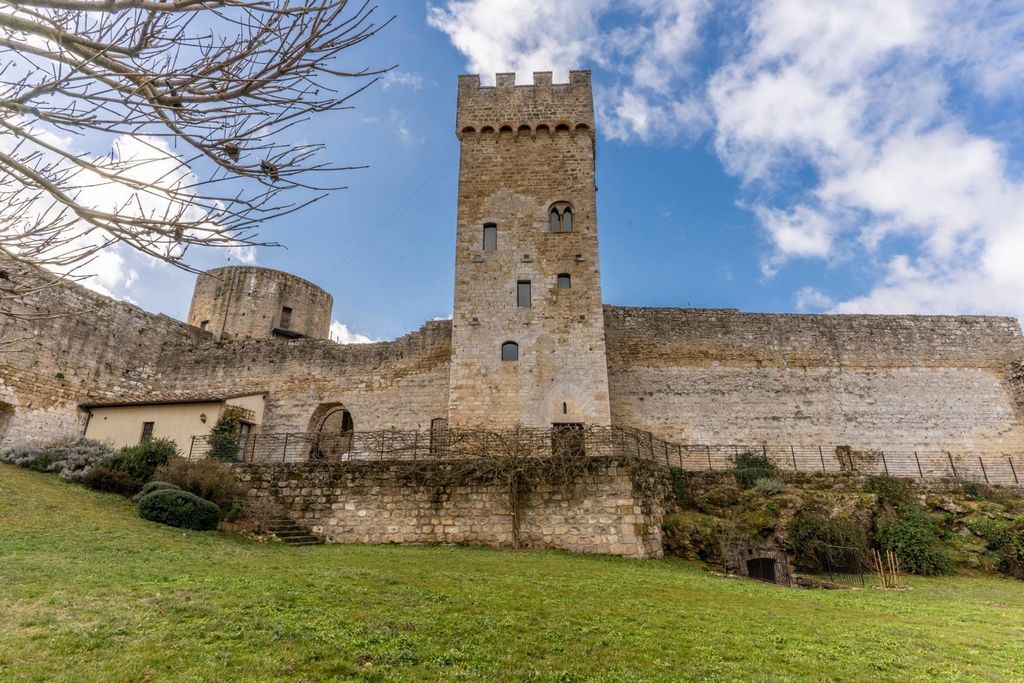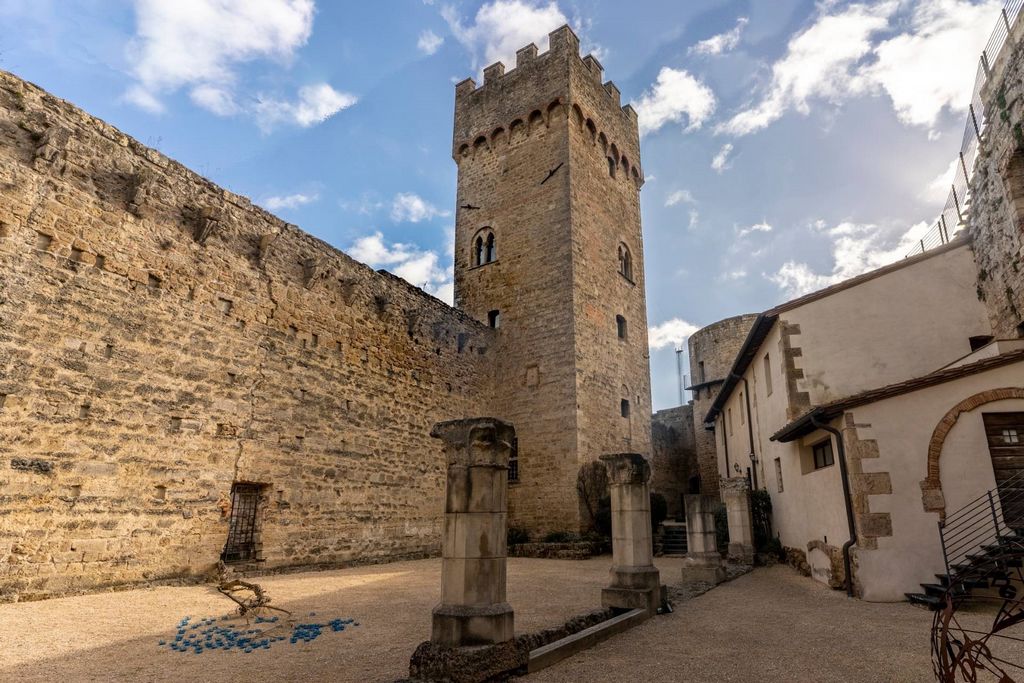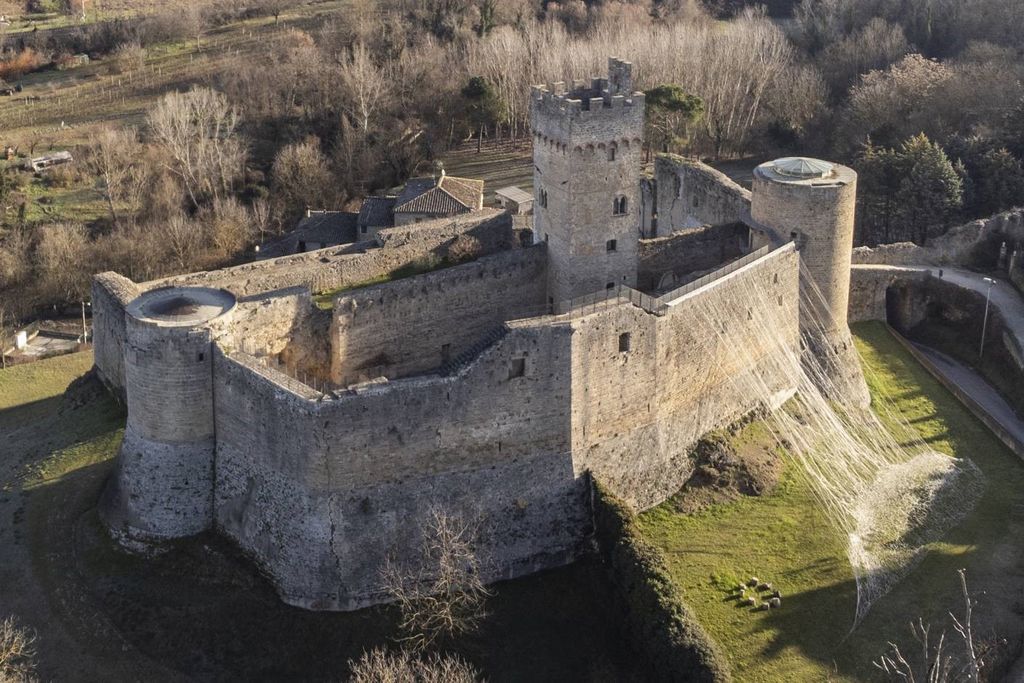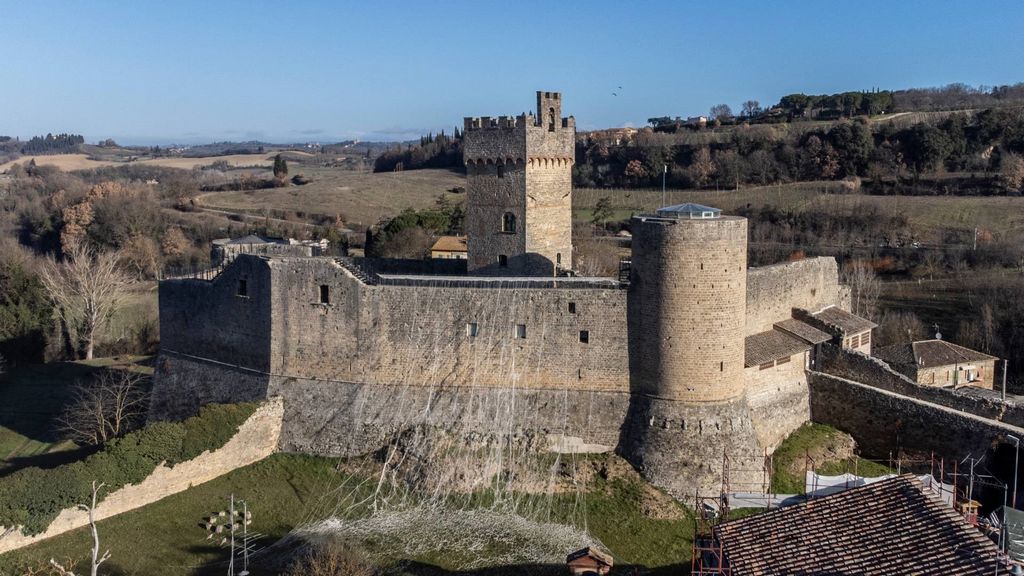POBIERANIE ZDJĘĆ...
Pozostałe (Na sprzedaż)
Źródło:
EDEN-T97106660
/ 97106660
Źródło:
EDEN-T97106660
Kraj:
IT
Miasto:
Poggibonsi
Kod pocztowy:
53036
Kategoria:
Mieszkaniowe
Typ ogłoszenia:
Na sprzedaż
Typ nieruchomości:
Pozostałe
Wielkość nieruchomości:
890 m²
Wielkość działki :
13 000 m²
Pokoje:
24
Łazienki:
5
Taras:
Tak
CENA NIERUCHOMOŚCI OD M² MIASTA SĄSIEDZI
| Miasto |
Średnia cena m2 dom |
Średnia cena apartament |
|---|---|---|
| Toskania | 9 149 PLN | 12 635 PLN |
| Arezzo | 7 597 PLN | 8 513 PLN |
| Lukka | 9 585 PLN | 13 380 PLN |
| Marche | 6 990 PLN | 9 765 PLN |
| Bastia | - | 10 651 PLN |
| Górna Korsyka | 11 318 PLN | 11 908 PLN |
| Włochy | 7 909 PLN | 11 715 PLN |
| Korsyka | 11 386 PLN | 12 849 PLN |
| Wenecja | - | 22 048 PLN |
| Brescia | 8 352 PLN | 11 593 PLN |
| Lombardia | 7 690 PLN | 11 149 PLN |
| Korsyka Południowa | 17 003 PLN | 14 815 PLN |
| Lacjum | 8 089 PLN | 13 171 PLN |
| Abruzja | 5 546 PLN | 7 587 PLN |
| Wenecja Euganejska | 6 934 PLN | 10 551 PLN |
| Porto-Vecchio | 18 617 PLN | 19 970 PLN |
| Ajaccio | 17 405 PLN | 15 176 PLN |
| Pescara | 5 579 PLN | 8 157 PLN |






Features:
- Terrace
- Garden Zobacz więcej Zobacz mniej Rocca di Staggia má za sebou deset století historie. Jeho počátky sahají až do doby před 1. stoletím a probíhají mezi historickými událostmi, které Toskánsko postihly, zejména středověkem s válkou mezi Florencijskou a Sienskou republikou. Pevnost byla rezidencí velké prestiže, a to natolik, že se zde konaly významné diplomatické události. Až do šestnáctého století bylo také centrem toskánské hospodářské a finanční moci. Používal ji také Lorenzo de Medici, známý jako Nádherný, který ji po spiknutí Pazziů v roce 1478 použil jako referenční bod pro znovudobytí všech území až po Sienu. Hrad je příkladem opevněné architektury, která se vyvíjela v průběhu staletí a byla předmětem neustálých inovativních zásahů, včetně těch nejprestižnějších, které byly prováděny pod vedením Filippa Brunelleschiho, který byl pozván do Staggie, aby dohlížel na práce na severozápadní věži během let výstavby florentské katedrály Duomo. Hrad se skládá z dvoustěnného ohrazení vysokých a silných rozměrů. Celá nemovitost se skládá z několika budov převážně ze zděného kamene, s věží, bedněním o rozloze přibližně 890 metrů čtverečních a zdmi o vnitřní ploše asi 2500 metrů čtverečních a okolní zemědělskou půdou, za hradbami přibližně 13 000 metrů čtverečních. Jeho současný stav je způsoben restaurováním a rehabilitací vnějších a vnitřních stěnových systémů z počátku roku 2000, které mu vrátily jeho původní lesk a obdařily jej plnou současnou použitelností. Dnes je zde turistický ubytovna, muzejní komplex, ale je možné obnovit rezidenční destinaci pro ty, kteří opravdu chtějí bydlet na zámku. Tyto informace jsou poskytovány pouze pro obecné informační účely a nemělo by se na ně spoléhat při rozhodování o koupi domu
Features:
- Terrace
- Garden Rocca di Staggia recorre diez siglos de historia. Sus orígenes se remontan a antes del siglo 1 y corren entre los acontecimientos históricos que afectaron a la Toscana, en particular la Edad Media con la guerra entre las Repúblicas de Florencia y Siena. La fortaleza era una residencia de gran prestigio, tanto que fue el sitio de importantes eventos diplomáticos. También ha sido el centro del poder económico y financiero toscano hasta el siglo XVI. También fue utilizado por Lorenzo de Medici, conocido como el Magnífico, quien lo utilizó, después de la conspiración Pazzi de 1478, como punto de referencia para la reconquista de todos los territorios hasta Siena. El castillo es un ejemplo de arquitectura fortificada desarrollada a lo largo de los siglos, habiendo sido objeto de continuas intervenciones innovadoras, incluidas, las más prestigiosas, las llevadas a cabo bajo la guía de Filippo Brunelleschi, quien fue invitado a Staggia para supervisar el trabajo de la torre noroeste durante los años de la construcción del Duomo de Florencia. El castillo consta de un recinto de doble pared de altas y gruesas dimensiones. Toda la propiedad consta de varios edificios hechos principalmente de piedra de mampostería, con una torre, encofrado de alrededor de 890 metros cuadrados y paredes con un área interna de aproximadamente 2500 metros cuadrados y tierras agrícolas circundantes, más allá de las paredes de aproximadamente 13,000 metros cuadrados. Su estado actual se debe a una restauración y rehabilitación de los sistemas de paredes externas e internas de principios de la década de 2000 que lo devolvieron a su esplendor original y lo dotaron de una usabilidad contemporánea completa. Hoy en día tiene un alojamiento turístico, un complejo de museos, pero es posible restaurar el destino residencial para aquellos que realmente quieren vivir en un castillo. Esta información se proporciona solo con fines informativos generales y no se debe confiar en ella para tomar decisiones de compra de vivienda.
Features:
- Terrace
- Garden Rocca di Staggia attraversa dieci secoli di storia. Le sue origini risalgono a prima dell'anno mille e corrono tra gli eventi storici che hanno interessato la Toscana, in particolare il Medioevo con la guerra tra le Repubbliche di Firenze e di Siena. La rocca è stata una residenza di grande prestigio, tanto da essere luogo di importanti eventi diplomatici e del potere economico e finanziario toscano fino al sedicesimo secolo. È stata utilizzata anche da Lorenzo dei Medici, detto il Magnifico, che se ne servì, dopo la congiura dei Pazzi del 1478, come punto di riferimento per la riconquista di tutti i territori fino a Siena. Il castello è un esempio di architettura fortificata sviluppatasi nei secoli, essendo stato oggetto di continui interventi innovativi tra i quali, i più prestigiosi, quelli eseguiti sotto la guida di Filippo Brunelleschi che venne invitato a Staggia a sovraintendere i lavori della torre di Nord Ovest durante gli anni della costruzione del Duomo di Firenze Il castello è costituito da un doppio recinto murario di alte e spesse dimensioni. Tutta la proprietà è composta da più fabbricati prevalentemente realizzati in muratura, con torre/bastione, cassero per un totale di 890mq circa e cinta muraria con area interna di circa 2500mq e terreni agricoli circostanti, oltre le mura, di circa complessivi mq catastali 13.000. Il suo stato attuale è dovuto ad un restauro e risanamento degli apparati murari esterni ed interni degli inizi degli anni 2000 che lha riportata al suo splendore originale e lha dotata di una piena fruibilità contemporanea. per maggiori informazioni e documetazione si prega di contattare l'agenzia ... Queste informazioni sono fornite a mero scopo informativo generale e non costituiscono elemento contrattuale.
Features:
- Terrace
- Garden Rocca di Staggia går igenom tio århundraden av historia. Dess ursprung går tillbaka till före 1: a århundradet och går mellan de historiska händelserna som drabbade Toscana, särskilt medeltiden med kriget mellan republikerna Florens och Siena. Fästningen var en bostad med stor prestige, så mycket att det var platsen för viktiga diplomatiska händelser. Det har också varit centrum för den toskanska ekonomiska och finansiella makten fram till sextonhundratalet. Det användes också av Lorenzo de Medici, känd som Magnificent, som använde den, efter Pazzi-konspirationen 1478, som en referenspunkt för återerövring av alla territorier upp till Siena. Slottet är ett exempel på befäst arkitektur som utvecklats under århundradena, efter att ha varit föremål för kontinuerliga innovativa ingrepp inklusive, de mest prestigefyllda, de som utfördes under ledning av Filippo Brunelleschi som blev inbjuden till Staggia för att övervaka arbetet i nordvästra tornet under åren av byggandet av Duomo i Florens. Slottet består av en dubbelväggshägnad med höga och tjocka dimensioner. Hela fastigheten består av flera byggnader huvudsakligen gjorda av murad sten, med ett torn, formning på cirka 890 kvm och väggar med en inre yta på cirka 2500 kvm och omgivande jordbruksmark, bortom väggarna cirka 13 000 kvadratmeter. Dess nuvarande tillstånd beror på en restaurering och rehabilitering av de yttre och inre väggsystemen i början av 2000-talet som förde den tillbaka till sin ursprungliga prakt och gav den full modern användbarhet. Idag har det ett turistboende, ett museikomplex, men det är möjligt att återställa bostadsmålet för dem som verkligen vill bo i ett slott. Denna information tillhandahålls endast för allmänna informationsändamål och bör inte åberopas för att fatta några beslut om bostadsköp
Features:
- Terrace
- Garden Rocca di Staggia goes through ten centuries of history. Its origins date back to before the 1st Century and run between the historical events that affected Tuscany, in particular the Middle Ages with the war between the Republics of Florence and Siena. The fortress was a residence of great prestige, so much that it was the site of important diplomatic events. It also has been the center of the Tuscan economic and financial power up to the sixteenth century. It was also used by Lorenzo de Medici, known as the Magnificent, who used it, after the Pazzi conspiracy of 1478, as a reference point for the reconquest of all the territories up to Siena. The castle is an example of fortified architecture developed over the centuries, having been the subject of continuous innovative interventions including, the most prestigious, those carried out under the guidance of Filippo Brunelleschi who was invited to Staggia to supervise the work of the North West tower during the years of the construction of the Duomo of Florence. The castle consists of a double wall enclosure of high and thick dimensions. The whole property consists of several buildings mainly made of masonry stone, with a tower, formwork of around 890sqm and walls with an internal area of about 2500sqm and surrounding agricultural land, beyond the walls approximately 13,000 square meters. Its current state is due to a restoration and rehabilitation of the external and internal wall systems of the early 2000s which brought it back to its original splendor and endowed it with full contemporary usability. Today it has a tourist-accommodation, a museum complex, but it is possible to restore the residential destination for those who really want to live in a castle. This information is provided for general informational purposes only and should not be relied on in making any home-buying decisions
Features:
- Terrace
- Garden Η Rocca di Staggia διανύει δέκα αιώνες ιστορίας. Η προέλευσή του χρονολογείται πριν από τον 1ο αιώνα και εκτείνεται μεταξύ των ιστορικών γεγονότων που επηρέασαν την Τοσκάνη, ιδιαίτερα του Μεσαίωνα με τον πόλεμο μεταξύ των Δημοκρατιών της Φλωρεντίας και της Σιένα. Το φρούριο ήταν μια κατοικία μεγάλου κύρους, τόσο πολύ που ήταν ο τόπος σημαντικών διπλωματικών γεγονότων. Υπήρξε επίσης το κέντρο της οικονομικής και χρηματοπιστωτικής δύναμης της Τοσκάνης μέχρι τον δέκατο έκτο αιώνα. Χρησιμοποιήθηκε επίσης από τον Lorenzo de Medici, γνωστό ως Magnificent, ο οποίος το χρησιμοποίησε, μετά τη συνωμοσία Pazzi του 1478, ως σημείο αναφοράς για την ανακατάληψη όλων των εδαφών μέχρι τη Σιένα. Το κάστρο αποτελεί παράδειγμα οχυρωματικής αρχιτεκτονικής που αναπτύχθηκε κατά τη διάρκεια των αιώνων, έχοντας αποτελέσει αντικείμενο συνεχών καινοτόμων παρεμβάσεων, συμπεριλαμβανομένων, των πιο διάσημων, εκείνων που πραγματοποιήθηκαν υπό την καθοδήγηση του Filippo Brunelleschi, ο οποίος προσκλήθηκε στη Staggia για να επιβλέψει τις εργασίες του βορειοδυτικού πύργου κατά τα χρόνια της κατασκευής του Duomo της Φλωρεντίας. Το κάστρο αποτελείται από ένα διπλό τείχος περιβόλου υψηλών και παχιών διαστάσεων. Το όλο ακίνητο αποτελείται από διάφορα κτίσματα κυρίως από πέτρα τοιχοποιίας, με πύργο, ξυλότυπο περίπου 890τμ και τοίχους με εσωτερικό χώρο περίπου 2500τμ και περιβάλλοντα γεωργική γη, πέραν των τειχών περίπου 13.000 τετραγωνικά μέτρα. Η σημερινή του κατάσταση οφείλεται στην αποκατάσταση και αποκατάσταση των συστημάτων εξωτερικών και εσωτερικών τοίχων των αρχών της δεκαετίας του 2000, η οποία το επανέφερε στην αρχική του αίγλη και το προίκισε με πλήρη σύγχρονη χρηστικότητα. Σήμερα διαθέτει ένα τουριστικό κατάλυμα, ένα μουσειακό συγκρότημα, αλλά είναι δυνατόν να αποκατασταθεί ο οικιστικός προορισμός για όσους θέλουν πραγματικά να ζήσουν σε ένα κάστρο. Αυτές οι πληροφορίες παρέχονται μόνο για γενικούς ενημερωτικούς σκοπούς και δεν πρέπει να βασίζεστε σε αυτές κατά τη λήψη αποφάσεων αγοράς σπιτιού
Features:
- Terrace
- Garden Rocca di Staggia traverse dix siècles d’histoire. Ses origines remontent à avant le 1er siècle et se situent entre les événements historiques qui ont affecté la Toscane, en particulier le Moyen Âge avec la guerre entre les Républiques de Florence et de Sienne. La forteresse était une résidence d’un grand prestige, à tel point qu’elle a été le site d’événements diplomatiques importants. Il a également été le centre du pouvoir économique et financier toscan jusqu’au XVIe siècle. Il a également été utilisé par Laurent de Médicis, connu sous le nom de Magnifique, qui l’a utilisé, après la conspiration Pazzi de 1478, comme point de référence pour la reconquête de tous les territoires jusqu’à Sienne. Le château est un exemple d’architecture fortifiée développée au cours des siècles, ayant fait l’objet d’interventions innovantes continues, y compris, les plus prestigieuses, celles réalisées sous la direction de Filippo Brunelleschi qui a été invité à Staggia pour superviser les travaux de la tour nord-ouest pendant les années de construction du Duomo de Florence. Le château se compose d’une enceinte à double paroi de dimensions hautes et épaisses. L’ensemble de la propriété se compose de plusieurs bâtiments principalement en pierre de maçonnerie, avec une tour, un coffrage d’environ 890 m² et des murs d’une superficie intérieure d’environ 2500 m² et des terres agricoles environnantes, au-delà des murs d’environ 13 000 mètres carrés. Son état actuel est dû à une restauration et à une réhabilitation des systèmes muraux extérieurs et intérieurs du début des années 2000 qui l’ont ramené à sa splendeur d’origine et l’ont doté d’une pleine facilité d’utilisation contemporaine. Aujourd’hui, il dispose d’un hébergement touristique, d’un complexe muséal, mais il est possible de restaurer la destination résidentielle pour ceux qui veulent vraiment vivre dans un château. Ces renseignements sont fournis à titre informatif seulement et ne doivent pas être utilisés pour prendre des décisions d’achat d’une maison.
Features:
- Terrace
- Garden Rocca di Staggia atravessa dez séculos de história. Suas origens remontam a antes do século 1 e correm entre os eventos históricos que afetaram a Toscana, em particular a Idade Média com a guerra entre as Repúblicas de Florença e Siena. A fortaleza era uma residência de grande prestígio, tanto que foi o local de importantes eventos diplomáticos. Também tem sido o centro do poder econômico e financeiro da Toscana até o século XVI. Também foi usado por Lourenço de Médici, conhecido como o Magnífico, que o usou, após a conspiração Pazzi de 1478, como um ponto de referência para a reconquista de todos os territórios até Siena. O castelo é um exemplo de arquitetura fortificada desenvolvida ao longo dos séculos, tendo sido objeto de contínuas intervenções inovadoras, incluindo, as mais prestigiadas, aquelas realizadas sob a orientação de Filippo Brunelleschi, que foi convidado a Staggia para supervisionar o trabalho da torre noroeste durante os anos da construção do Duomo de Florença. O castelo é composto por um recinto de parede dupla de dimensões altas e grossas. Toda a propriedade é constituída por vários edifícios maioritariamente feitos de pedra de alvenaria, com uma torre, fôrmas de cerca de 890m² e paredes com uma área interna de cerca de 2500m² e terrenos agrícolas envolventes, para além das muralhas de aproximadamente 13.000 metros quadrados. O seu estado atual deve-se a uma restauração e reabilitação dos sistemas de paredes exteriores e internas do início dos anos 2000, que o trouxeram de volta ao seu esplendor original e o dotaram de plena usabilidade contemporânea. Hoje tem um alojamento turístico, um complexo museológico, mas é possível restaurar o destino residencial para quem realmente quer viver num castelo. Esta informação é fornecida apenas para fins informativos gerais e não deve ser invocada na tomada de quaisquer decisões de compra de casa.
Features:
- Terrace
- Garden